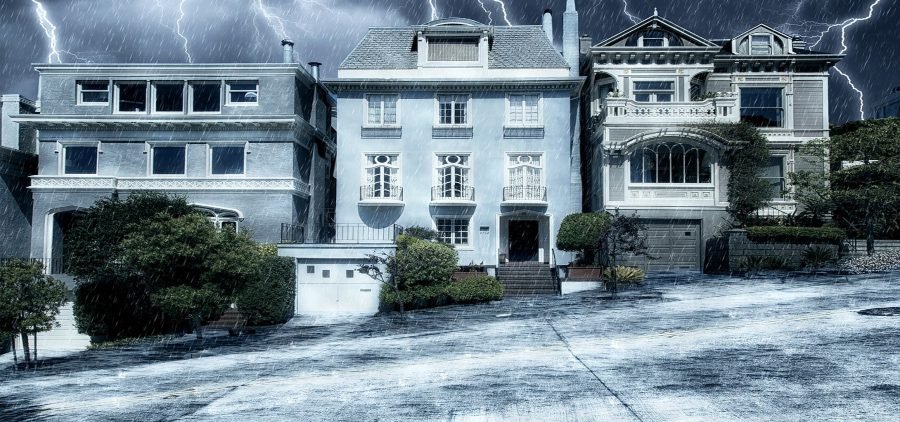As most of us can admit, Toronto’s weather is no longer the same. Serious changes have happened in recent years, like increased rainfall, a situation that has exposed homeowners to the dangers of basement flooding.
You’ve probably done it yourself, seen, or heard of how homeowners across the city are rushing to make their homes flood-proof.
Let’s face it, no one really wants to deal with the backflow of sewage pipes or overtaxed stormwater brought about by heavy rainfall, right?
That’s why the Canadian government has injected much-needed help into the efforts being made to reduce the risks and costs brought about by basement flooding.
Meet the Basement Flooding Protection Subsidy Program, an initiative whose goal is to help Toronto residents protect their basements from flooding.
Would you like to know more about this program, from how it works and the eligibility requirements to how to apply and hire a contractor for the same? We’ve got you covered.

How the Basement Flooding Subsidy Program Works
While the city of Toronto invests substantial amounts of money annually to maintaining and updating its complex network of underground pipes, catch basins, and sewers, these efforts alone are not enough to protect your home from basement flooding.
Basement flooding can be caused by a myriad of reasons, such as plumbing leaks, poor drainage, a leaky foundation, and faulty windows, just to name but a few.
The City of Toronto, through this program, now offers a subsidy of up to $3,400 to help property owners prevent basement flooding.
In the past decade alone, they have put about $37 million towards flood-proofing, all channelled through this program. An estimated 21,500 properties have been covered in the process.
Who Can Apply?
Unfortunately, this program isn’t open to all property owners. Only folks who own single-family, duplex and triplex residential homes are entitled to that subsidy.
Eligibility Requirements
Before you apply for this program, there are key conditions you need to be aware of, as this will ensure that your application process is as smooth as it can be.
They include:
- You must be a Toronto-based registered owner of either the three types of property we mentioned earlier, i.e., single-family, duplex, and triplex.
- The subsidy is not available to homes that are still under construction or in the planning stages. Only existing homes qualify.
- The contractor you choose to perform the installation of the flood prevention devices must have a valid license from the City of Toronto for the work they are going to do for you. All subcontractors that will work with your contractor must also have the license.
- You need to have cleared any debts or taxes owed to the city of Toronto before applying for the subsidy.
- The subsidies are issued on a “first-come, first-serve basis.” The application does not guarantee that you will get the subsidy.
- Do-it-yourself installations are not considered for the subsidy.
- While submitting your application, you must attach original invoices of the contractor(s) and any subcontractor(s) who undertook the installation of the flood prevention components.
Note that the list of subsidy conditions we’ve just mentioned is not exhaustive and explicit. So, spare some time to check out the City of Toronto’s website to learn more.
What is the Eligible Work Covered by the Subsidy?
Here are the three major installations covered by the subsidy:
1. Installation of a Sump Pump
A sump pump is placed in a sump pit and is used to pump all the water collected from a house’s weeping tile system. It pumps all the water to the outside, away from the foundation of the house.
Sump pumps can fail during blackouts, a situation that necessitates the need for a battery backup option as a prudent measure. Thankfully, the subsidy covers the installation of the alarm and backup power systems for the sump pump, in addition to the sump itself or the replacement of the same.
The available subsidy covers 80% of the invoiced cost, with the maximum amount capped at $1,750.
2. Capping and Pipe Severance
This is the disconnection of the home’s weeping from the City’s sewer system by capping or severing the underground sewer connection. Usually, the pipe end that comes from the ground needs to be capped after disconnection to stop animals from entering.
Expect the program to foot 80% of the invoiced costs up to a maximum of $4,000.
3. Installation of a Backwater Valve
This device is installed in your home’s sewer line to prevent the backflow of sewage from the city’s sewer line into your basement. A well-installed backwater valve will stop sewage backup and prevent it from coming out of your other basement outlets, like toilets, sinks, and showers.
Like the sump pump, the subsidy covers the installation of the alarm and backup power systems to prevent failure during a blackout. All backwater valves approved by the Province of Ontario are actually covered by the subsidy.
Like with the other installations, the program will pay for 80% of the invoiced costs up to a maximum of $1,250.

How do you Apply for the Subsidy?
The application for the Basement Flooding Prevention Subsidy is really simple. As long as you meet all the conditions required, all you need to do is follow the following steps:
Step 1: You will need to obtain a building permit from the municipal government for the installation of the backwater valve in Toronto. If you want to install both the backwater valve and sump pump, you’ll have to complete a Consent to Enter form, then submit it together with your building permit application.
Step 2: Once the installation is complete, you will need to request an inspection from the Toronto Building staff. They will make sure all the devices are installed properly. You should also wait until after the inspection before you close the valves.
Step 3: Once the first two steps are taken care of, you can now complete the remaining parts of the Basement Flooding Prevention Subsidy Program form. Note that you only need to obtain the permit and complete the Consent to Enter form if you are installing the devices they apply to.
Step 4: Attach all the original invoices of all the work done on your home with your application form. The invoices must show the clear cost breakdown of every item related to the subsidy and they must all be clearly marked as paid in full. In case your contractor used a licensed subcontractor, their original invoices must be included as well.
Step 5: You can then mail the completed application with all the attached documentation to the following address:
Basement Flooding Protection Subsidy Program
City of Toronto
PO Box 15266 STN B RM B
Toronto, ON M7Y 2W1
The City staff will carefully review your application and determine your eligibility for the subsidy. If you failed to complete your application or you failed to include all the required documentation, your application will not be processed, and it will be returned to you; the notification of which you will get via mail.
Want to know how projects are determined, about the construction, and other related information? The Toronto city’s website has all of that.
In Summary
Isn’t it reassuring knowing that the City of Toronto’s backflow prevention program will pay all or a portion of the basement waterproofing cost you will incur in protecting your property from the dangers of flooding?
What’s more, you have all the information you need to make this happen. Remember to conduct due diligence, as recommended by the municipal government, before selecting a contractor.
It’s even better when your property is under the care of a reputable property management company, as their experience and knowledge enable them to navigate the whole process with ease while sticking to the best practices.

